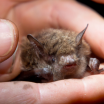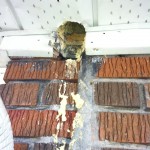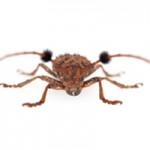Creatures of the night, not much bigger than a house mouse and can live up to 10 years. Bats will mate in fall or winter and their pups are usually weaned in July or August. They are usually detected by their droppings or noise-making. Their droppings have a musty odour and are often mistaken for mice or birds. The droppings often look like crushed fine, shiny undigested insect parts while mice are firm.
Inspecting the exterior before dark or spending roughly an hour before dawn watching for their return can help determine whether or not they are roosting in a structure. They are nocturnal creatures and will not leave their roosting sites if they are faced with bright lights so when inspecting the structure it is advised to apply several layers of red cellophane over the head of the flash light secured with a rubber band.
It is easier to remove newly installed bat colonies in comparison to well established ones. When a bat infestation takes place in your home, consider multiple methods. The ideal time to control bats is in the spring before they return to the roost or in the fall when they leave for the winter season.
Bats do help control the mosquito population and thus should be encouraged to roost in our neighbourhoods, just not in our homes and structures. Installing bat houses are a great way of achieving this. and the best way to keep them out of your house is to seal off all places of entry and place fine screens over places that require ventilation.



